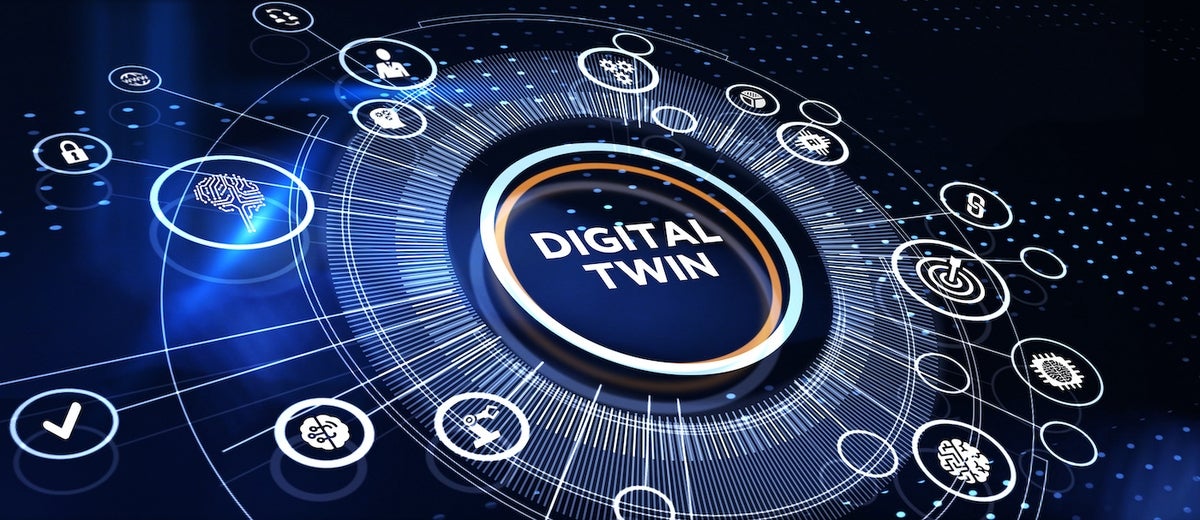
To meet ever more complex challenges in operations, customer demand, compliance and sustainability, businesses across a broad spectrum of industries are increasingly turning to digital twins.
A new CapGemini study of 1,000 organizations of companies in life sciences, consumer products, energy and utilities, discrete manufacturing and infrastructure operators found that 80% of them are employing digital twins to develop new products, improve operational efficiencies, increase worker safety and meet sustainability targets.
“Our research reveals that digital twin deployments are being driven by both top and bottom lines, as well as safety, sustainability and brand reputation,” the Reflecting Reality – Digital Twins: Adding Intelligence to the Real World study said. “Organizations working on digital twins have already seen, on average, a 15% improvement in metrics such as sales, turnaround time and operational efficiency, as well as an improvement upwards of 25% in system performance.”
Survey respondents also reported a 16% improvement in sustainability through the use of digital twins. Thirty-six percent of survey respondents said they plan to increase the deployment of digital twins in the next five years.
According to MarketsandMarkets, the market for digital twins was valued at $3.1 billion in 2020 and is projected to grow to $48.2 billion by 2026, a 58% compound annual growth rate.
What is a digital twin?
In its simplest form, a digital twin is the virtual representation of a real-world object or process such as the movement of a robotic arm, an entire assembly line or a supply chain. When digital twins are linked together, they can represent vast systems-of-systems that can track events and processes in real time.
Operators can input changes into the digital twin and have those changes reflected in the real world or real-world inputs can be represented in the digital twin alerting operations teams to potential problems with shipments, machines, production, business processes and the like.
The popularity of digital twins is increasing in part because the massive amounts of data being generated by technologies such as AI, cloud, 5G and edge computing improve their usefulness and effectiveness. This data allows organizations to develop highly-detailed models that were not possible in the past.
“The greatest value of a digital twin comes from being able to predict or simulate the impact of a particular change on the entire ecosystem,” the report said.
But its greatest impact, cited by 71% of respondents, is on an organization’s ability to quickly make sense of massive amounts of data coming from disparate sources and locations across the organization.
SEE: Hiring Kit: Database engineer (TechRepublic Premium)
Drivers of digital twin adoption
The top five reasons organizations are investing in digital twins are to:
- Cut costs (79%)
- Advance technology in their organizations (77%)
- Reduce time to market for new products and services (73%)
- Introduce new business models (67%)
- Increase customer-centricity (65%)
Increasing employee safety and improving sustainability efforts came in at 64% and 60% respectively.
“Digital twins allow organizations to improve on a number of metrics, such as costs, operational efficiency, turn-around times and sustainability. Our research shows that organizations have realized a 13% decrease in costs, on average, across the various use cases of digital twins and a 15% increase in operational efficiency,” the report said.
SEE: Microsoft Power Platform: What you need to know about it (free PDF) (TechRepublic)
Cybersecurity a major concern with digital twins
Because digital twins take in vast amounts of data from systems across an organization and its partners, cybersecurity is a serious concern, the report said. Because communication between digital twins and the systems that it interacts with is bi-directional, hackers who gain control of a digital twin can wreak havoc, taking over control of real-world systems, manipulating or stealing sensitive data and/or introducing malware that can spread to other systems.
“The privacy and security risks associated with digital twin deployment are manifold,” the report said. “Reinforced data security and privacy measures are, therefore, indispensable prior to digital twin deployments—a sentiment echoed by 69% of surveyed organizations, who plan to effect major changes in their end-to-end cybersecurity.”
